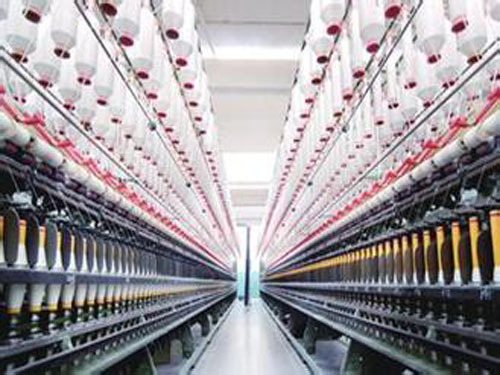Recently, at the symposium on the “Thirteenth Five-Year†textile development forum held in Jilin, Jilin Province, China and the 50th anniversary of Jilin Chemical Fibre completed and put into production, the academician of the Chinese Academy of Engineering, Donghua University professor and doctoral tutor Yu Jianyong did “China's textile industry technology. The report of the Research on Innovation and Development Strategy (2016~2030) pointed out that at present, the technological progress of China's textile industry is facing 9 major bottlenecks such as the high-performance, diversification, and ecological level of fiber materials to be improved. Poly Lace,Lace Fabric,Nylon Cotton Lace,Nylon Cotton Rayon Shaoxing Jiuyang Textile co.,ltd , https://www.textilejy.com
The high-performance, diversified and ecological level of fiber materials needs to be improved. The main performance is: weak performance in high-performance fiber independent innovation, key technologies and equipment still need to be breakthrough, dependence on para-aramid imports exceeds 95%, and dependence on carbon fiber imports exceeds 80%; The new functional fibers have yet to be expanded and improved. The proportion of functionalized and differentiated products is relatively low. The generic fiber high simulation variety and effects need to be expanded and improved; chemical fibers are highly dependent on fossil resources, and the chemical fiber industry’s dependence on petroleum As high as 65%, new biomass fiber research is still being followed; technology integration is low and equipment is relatively backward; development of natural fiber is limited, and raw cotton is imported more than 4 million tons each year, which is restricted by the red line of arable land, relying solely on expanding the scale of cultivation and breeding. The pattern of natural fibers is difficult to sustain.
Advanced textile processing technology needs to be formed. The high efficiency, low consumption, continuous and automatic level of spinning, weaving and non-woven fabrics need to be improved; the technical capabilities of high-end value chain, such as compound, high support, fashion, comfort, and high quality, need to be formed. According to surveys, the related companies are currently 52% of production technology is based on imitative or imitation-based innovation, independent innovation accounts for only 18%, and the independent innovation capability of textile processing technology needs to be improved.
Ecological dyeing and finishing technology still needs new breakthroughs. At present, China's dyeing and finishing industry, resource consumption and pollutant emissions are still large, China's annual printing and dyeing machine fabric more than 600 million meters, more than 12 million tons of knitted fabrics, 30 million tons of standard coal consumption, wastewater discharge 3 billion tons, codcr emissions 28 million tons. High-risk toxic and hazardous textile chemicals are still in use. Of the 70 environmental hormones identified so far, 26 are related to textile auxiliaries.
Functional clothing and apparel smart design and production technology to be developed. At present, the design and development of functional apparel in China is at the initial stage, and the creative design and development of apparel are in the state of imitation and tracking; the intelligent and automated technologies for apparel design and manufacturing need to be improved. At present, nearly 2,000 garment production lines in China only account for about 5% of the total. about.
The technical level of industrial textiles needs to be improved. China's industrial textiles account for 22% of the total fiber products, which is far lower than the proportion of 40% in the developed countries. The key technologies of the new textile composite materials seek for breakthroughs; the high-end biomedical textiles import 6 billion US dollars annually; special fiber raw materials and equipment There is no effective connection between products, applications, and applications.
Textile equipment design and manufacturing need not go to the high end. The manufacturing technology of textile equipment needs to be improved. The level of integration, modularization and automation of equipment design and manufacturing is not high; more than 90% of high-end textile equipment mainly depends on imports.
The level of industrial information technology needs to be improved. In the production process, the enterprise has the phenomenon of “rich data and lack of knowledgeâ€, and the lack of correlation between production data and process optimization; the low level of application and integration of enterprise informationization, and the low degree of application of integrated management and control; the Internet of Things applied to the textile industry Key technologies have yet to be developed.
The whole life cycle of low carbon green textiles needs to be formed. The recycling technology needs to be developed urgently. The annual waste fiber products amount to 26 million tons, and the chemical fiber recycling cycle is in its infancy. The carbon footprint label certification remains to be established: carbon footprint and carbon label certification have not yet been carried out. At present, only a very small number of companies have obtained the international eco-textile standard certification.
Collaborative innovation capability is weak, input is insufficient, and talent is lacking. Dispersed resources for technological innovation in the textile industry, it is difficult to form the overall technical cooperation and integration of the industry; the overall industry annual r&d funding intensity is less than 1%, and the R&D funds invested by the company are mainly used for the introduction and renewal of its hardware facilities; The combination of training and practical application of the industry is not close enough; more than 65% of respondents believe that the lack of various types of talent is the main factor hindering corporate science and technology innovation.
April 03, 2021